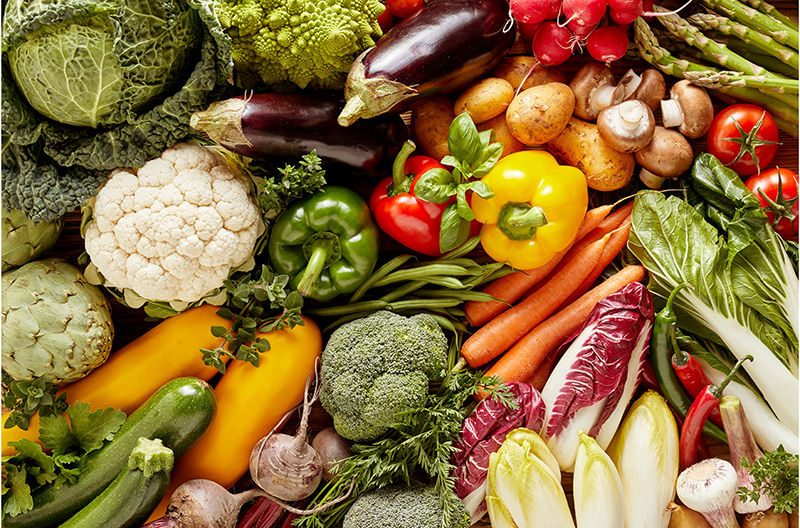To document the changing nature of the marketplace, IRI, Anne-Marie Roerink of 210 Analytics and Marriner Marketing have teamed up to continue to bring the latest trends and analysis relative to fresh produce sales. This is the sixth in a series of reports presented by IRI, discussing inflation trends.
Fresh produce prices are up from last year, at 10.1 percent, which is right in line with total food and beverages. In March 2022, the price per pound for total fresh produce reached $1.89. The latest 52-week look was lower, at $1.72, given the much milder inflation in the second quarter of 2021. Fresh vegetable inflation was far below average, at 7 percent in March, contrary to fruit, at 13.3 percent.
“While the March increase of 13.3 percent is certainly concerning, there is some measure of good news in that the rate of inflation no longer accelerated but actually moderated a bit,” said Joe Watson, International Fresh Produce Association’s VP of retail, foodservice and wholesale. “Inflation jumped 16.1 percent year-on-year in February 2022 to an average of $1.92 per pound. In March, the average price per unit across fruits and vegetables was $1.89. I talk to many retail produce professionals around the country and they remain positive going into the mid-spring and summer seasons.
“While most agree that the elevated cost of transportation will persist, and possibly even be higher for products coming out of the Western USA growing regions for the remainder of 2022, the more regional crops coming into production could lessen the burden of high freight costs.”
March sales
The four March 2022 weeks brought $54.3 billion in total food and beverage sales, which was down from $55.5 billion in February. Compared with March 2021, dollars increased 6.0 percent and compared with pre-pandemic, March sales were up 22.3 percent. However, against the giant spikes of March 2020, sales were down 12.0 percent. Inflation played a significant role with year-on-year unit sales down 3.9 percent.
Perishables, including produce, seafood, meat, bakery and deli, had slightly above average growth, at 6.3 percent. Fresh produce sales exceed the frozen food department sales this month, totaling $5.6 billion. While dollars were up, unit sales were down. It is important to note that the Easter and Passover holidays are two weeks later in 2022, with the majority of sales moving from the first quarter in 2021 to the second quarter in 2022.
March 2022 produce sales reached $5.6 billion, surpassing the record set in 2021 by 4.7 percent. However, dollar gains were inflation-boosted while units and volume sales declined year-on-year.
“The unit and volume pressure persisted but remained within five points versus year ago,” Watson said. “In addition to inflationary pressure, it is important to recognize the effect of supply chain disruption and out-of-stocks. Assortment has been affected by the labor, transportation and other supply chain issues. Actively communicating and providing recommendations for alternatives are important best practices in case of out-of-stocks.”
Each of the four March weeks generated around $1.4 billion, which is very similar to the weekly levels seen in the December through February weeks. Year-on-year gains were up around 5 percent whereas pounds were down between 4 and 6 percent. While fruit sales growth never dipped below year-ago levels, vegetable sales growth has trended in negative figures most of 2021 and the first quarter of 2022.
Fresh produce share of total fruits and vegetables
Shelf-stable fruits and vegetables had a strong, though inflation-boosted March. Both frozen and shelf-stable are heavily impacted by supply chain disruptions and assortment and inventory levels have been down significantly over recent months. Inflation was highest for shelf-stable fruit.
In the first quarter of 2022, just under 80 percent of total fruit and vegetable dollars were generated by the fresh produce department. This was close to the lows seen in 2020 despite higher inflation than the price increases seen in frozen.
As a share of total pounds sold across frozen, center store and fresh, fresh produce made up 78.3 percent in March and 77.2 percent in the first quarter.
Fresh fruit sales in March
“For the first time since starting our reporting in March 2020, we have no month-to-month changes in the top 10 fruit sellers nor in the order in which they appear in terms of sales,” said Jonna Parker, team lead fresh for IRI. “Berries remain the powerhouse with March sales of $714 million. The highest year-on-year gains were recorded by melons and oranges.”
Virtually all biggest sellers grew dollar sales versus year ago with the exception of bananas and mandarins. Volume sales were a different story. Only berries, melons and mixed fruit increased pound sales versus March 2021.”
For more information, visit iriworldwide.com.
To read the meat report from IRI presented by The Shelby Report, click here.
To read the dairy, deli and bakery report from IRI presented by The Shelby Report, click here.
To read the seafood report from IRI presented by The Shelby Report, click here.

